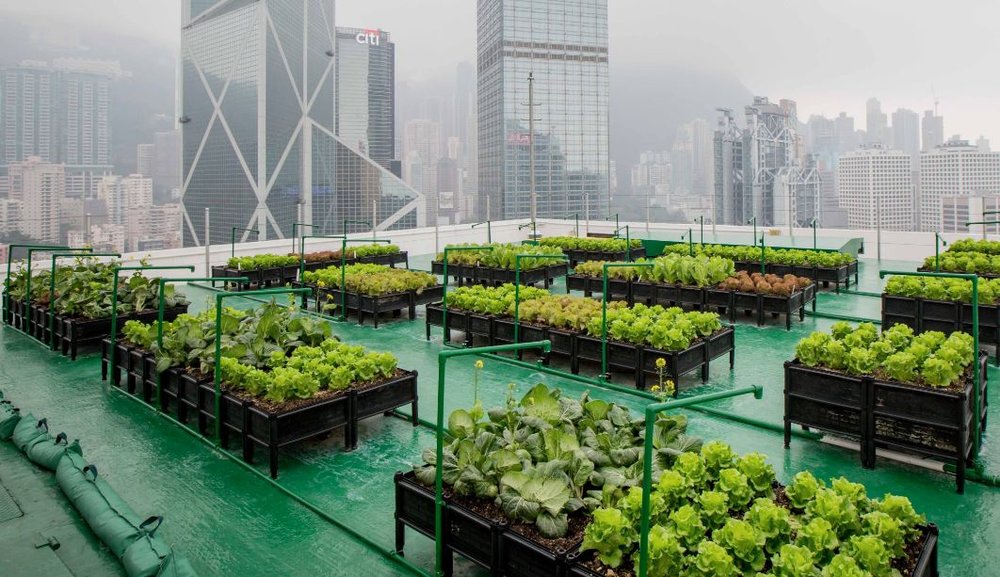The Ultimate Guide To City Blooming
The Ultimate Guide To City Blooming
Blog Article
What Does City Blooming Mean?
Table of ContentsAll About City BloomingSome Known Details About City Blooming An Unbiased View of City BloomingMore About City BloomingHow City Blooming can Save You Time, Stress, and Money.
Intrigued in expanding food available in the City of Chicago? Considering beginning a community yard? Modifications to the Chicago Zoning Statute enable agricultural uses like area gardens and metropolitan ranches in several parts of the city. Below is a listing of often asked inquiries pertaining to the rules and guidelines that farmers should take into consideration when preparing a metropolitan farming job.
The zoning amendment does not modify any type of various other codes handling composting, building licenses, buying or renting City had residential property, organization licenses or ecological contamination. There are existing codes that manage these issues and they remain in full result and might be relevant to your task. Area yards are generally had or handled by public entities, civic organizations or community-based organizations and maintained by volunteers.
Urban ranches expand food that is intended to be sold, either on a not-for-profit or for-profit basis. Due to their business objective, metropolitan farms need a company permit.
A Biased View of City Blooming
Composting is enabled yet just for plant material that is created and utilized on website. The amount of compost product can not go beyond 25 cubic lawns at any type of provided time according to the criteria in 7-28-715 of the City's Municipal Code. Yes. Because the soil at the majority of new yard sites requires changing, compost, dirt, timber chips, or various other products can be acquired to construct or boost the growing area - sustainability.

If a building license is required then the hoophouse will certainly be taken into consideration an accessory structure. You can learn more regarding the building authorization demands by speaking to the Division of Buildings. The 25,000-square-foot size restriction is planned to protect against a single community yard from dominating a given block or detracting from the block's existing property or industrial personality.
The limit does not put on yards found in Public Open Room (POS) areas. Can there be more than one area yard that is 25,000 square feet on a single block? Yes. The dimension limitation puts on individual yards, not to specific blocks. No. Fencing is not called for, however, gardens that have large parking lot may be called for to set up fencing or various other landscape design features.
City Blooming for Dummies
B1 & B2 districts require that all business usage activities be carried out inside your home. Is fence needed for city ranches? Fencings might be needed, along with landscaping and screening, for certain car parking areas and outdoor job or storage space areas depending on place and the particular task taking place.
Yes. Urban ranches call for structure authorizations and zoning authorizations before construction. Other kinds of city testimonial might be needed depending upon particular frameworks, activities, size, landscaping, licensing, public heath and stormwater monitoring problems. A number of these needs are identified in the project layout or allowing process, however, the applicant might be accountable to separately identify details licenses or allows that may be required.
The Division of Company Affairs and Customer Protection can help determine the particular type of company permit that's needed. Off street auto parking is needed for most industrial jobs in Chicago. The required number of car park rooms is based on the number of workers working on site and not the square video of the view publisher site expanding room.
City Blooming Can Be Fun For Everyone

An urban farm can sell compost material generated on website, however, the operation must comply with the policies in 7-28-715 of the Chicago Municipal Code. Aquaponic systems are enabled inside on city ranches in several zoning areas.
Approximately 5 hives or colonies of honey bees may be kept as an accessory usage. Beekeepers need to register with the Illinois Division of Farming. To find out more concerning the recommended zoning change you might contact the Division of Housing and Economic Growth, Bureau of Planning and Zoning at 312.744.8563.
Farming in cities and urban areas A city farm in Chicago. Urban agriculture describes various techniques of cultivating. https://ca-san-francisco.cataloxy.us/firms/cityblooming.com.htm, handling, and distributing food in metropolitan areas. The term likewise uses to the area tasks of animal husbandry, aquaculture, beekeeping, and cultivation in a metropolitan context. Urban agriculture is distinguished from peri-urban agriculture, which takes location in rural areas beside residential areas.
10 Simple Techniques For City Blooming
, who look for to develop social networks established on a shared ethos of nature and community holism. These networks can create by means of official institutional assistance, becoming incorporated right into local town preparation as a "shift town" movement for lasting urban development.
Some of the initial evidence of city agriculture comes from Mesopotamia.
Report this page